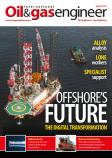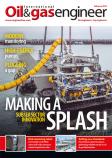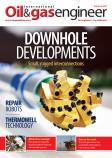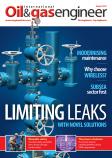The ability to retrofit a heat shield in a harsh and isolated environment without having to force a costly shutdown led to engineers specifying ZircoFlex flexible ceramic heat shield on a Caspian Sea oil platform.
The close proximity of the HVAC air handling unit to a flare stack had led to surface temperatures of up to 80˚C, risking crucial reliability issues for the production facility.
The flexibility offered by the 0.8mm thick ZircoFlex III heat shield enabled engineers to cut, form and apply ZircoFlex to large external areas of the HVAC during routine maintenance.
Despite difficult to reach areas, the self-adhesive backing with peel-off protector allowed the material to be cut, trimmed and fitted in situ. [Page Break]
The whole of the HVAC was covered, including its four metre squared side panels and eight metres of associated 500mm diameter ducting, all during a period of outage for routine maintenance.
The high temperature adhesive used by Zircotec allows ZircoFlex to operate at temperatures of up to 500°C. Each adjacent sheet was overlapped and then painted making the whole structure watertight, though ZircoFlex and the adhesive used is itself resistant to water.
“The rig operators needed a proven solution that could be implemented quickly, preferably without having to disassemble parts or fit heavy purpose-made heatshields,” says Peter Whyman, Zircotec’s sales manager. “ZircoFlex is highly efficient but is also light and compact. Our ability to send ZircoFlex sheets in a flat-packed crate helped tremendously in this instance, minimising shipping issues and allowing easy movement of the material to the engineers on the platform.”[Page Break]
The rig’s engineers were also keen that any heat shielding could be painted over so as not to interfere with routine anti-corrosion treatments. This requirement eliminated many products that just rely on their reflective capability or those that could not be painted such as wadding. It also eliminated those materials where water ingress would cause damage or reduce effectiveness. “Our heat shield can be painted and this will not affect the ceramic thermal barrier performance,” adds Whyman. “Coupled with the ability to supply the heat shield either flat-packed or in rolls, we have a transportable, robust and effective product for harsh and isolated environments.”
For more information, visit www.zircotec.com
Flexible ceramic heatshield solves temperature issues at oil platform
Paul Boughton

















